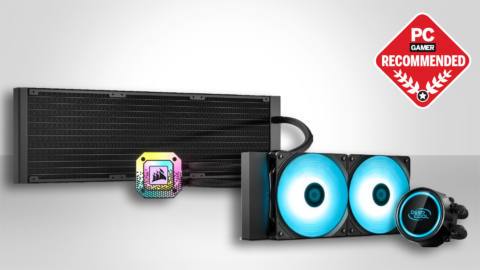Some like ’em runny, some don’t. Whatever your preference, it can be incredibly frustrating to buy a new CPU or CPU cooler and realise you now have to deliberate over the dozens of thermal pastes on the market. I mean, it’s just paste, for goodness’ sake.
Well, frustrate no longer because Igor’s Lab has just launched the “world’s first interactive thermal paste database“. This isn’t just a collection of manufacturer stats, either (although it does include some of these in its comparison pages). This database compares the data borne from Igor’s Lab’s real-world testing of thermal compounds.
Igor says: “Our database is based on real laboratory values that we have painstakingly determined according to industry standards”. And, pulling no punches, he continues by pointing out that “many of these results contradict the manufacturers’ marketing claims and ruthlessly expose contradictions and lies, but they are all well-founded, reproducible and legally sound”.
Based on a recent conversation we had with Igor about the lengths he’d gone to to test these many pastes properly, his figures should be top-notch.
The measurements should “not only reflect the overall performance values of the pastes, but also enable an assessment of their suitability for a specific area of application (layer thicknesses, surfaces) as well as their suitability taking into account the individual capabilities of the respective user”.
Igor says some of the data can even be used to assess the possible durability of the paste, but he won’t accept liability for this—if we want to infer durability, that’s on us.
One highlight of the database is that you can begin by filtering it for your skill level and use case. If you’re a beginner, you’ll want a less viscous (more runny) paste, and if you’re going for a GPU re-paste you’ll want a compound that has a low layer thickness of 25 to 100 μm.
Once those filters are in place (if desired), you can view the list and order it by manufacturer, the name of the paste, its thermal conductivity rating, and its viscosity rating.
You can also tick next to two thermal pastes to compare them, which brings you to a page outlining the differences between the two compounds in more detail. Here, it goes into manufacturer specifications, but also, for example, a graphed comparison of real-world temperatures when using both compounds.

Best AIO cooler for CPUs: Keep your chip chill.
Best air cooler for CPUs: Classic, quiet cooling.
I’m a massive fan of objective testing broken down into digestible listed comparisons for the reader’s benefit. There are some kinks to work out, such as the table spanning more than one webpage and the viscosity column ordering alphabetically rather than by, you know, viscosity. But these aside, I’m here for it.
And yes, it’s “just” thermal paste, but not all pastes are built the same, and while most are suitable for most builds, it’s still nice to know you’re using the best one for your budget.
What would really improve the database, in my opinion, would be the addition of a price column and perhaps a price-to-thermal conductivity column, to help quickly assess some value. After all, most people buy based on a budget, not pure performance.
Such additions might come over time, though, and for now, this seems like a fantastic resource for prospective PC builders and upgraders. +1 rep, for sure.






